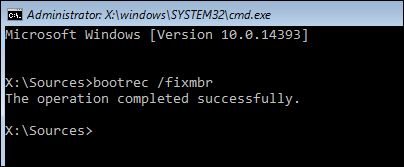
- Windows loader partition table not supported how to#
- Windows loader partition table not supported install#
- Windows loader partition table not supported drivers#
Use of livecd-iso-to-disk on any distribution other than Fedora is unsupported and not expected to work: please use an alternative method, such as Fedora Media Writer. Even if it happens to run and write a stick apparently successfully from some other distribution, the stick may well fail to boot. Livecd-iso-to-disk is not meant to be run from a non-Fedora system. livecd-iso-to-disk on other Linux distributions
Windows loader partition table not supported install#
If your test boot reports a corrupted boot sector, or you get the message MBR appears to be blank., you need to install or reset the master boot record (MBR), by passing -reset-mbr when writing the stick. If you get this message from fdisk, you may need to reformat the flash drive when writing the image, by passing -format when writing the stick. Partition has different physical/logical endings If you get the message Need to have a filesystem label or UUID for your USB device, you need to label the partition: dosfslabel /dev/sdX LIVE. Information: Don't forget to update /etc/fstab, if necessary. Number Start End Size Type File system Flagsġ 32.3kB 1062MB 1062MB primary fat16 boot Sector size (logical/physical): 512B/512B Welcome to GNU Parted! Type 'help' to view a list of commands.
Difference between Fedora and Red Hat Enterprise Linux. Installing, Configuring and Troubleshooting MySql/MariaDB. Windows loader partition table not supported drivers#
Creating Windows virtual machines using virtIO drivers. Installing virtual operating systems with GNOME Boxes. Getting started with virtualization (libvirt). Upgrading Fedora using the DNF system upgrade. Windows loader partition table not supported how to#
How to Set NVIDIA as Primary GPU on Optimus-based Laptops. How to join an Active Directory or FreeIPA domain. Getting started with Apache HTTP Server. Managing keyboard shortcuts for running an application in GNOME. Controlling network traffic with firewalld. Displaying a user prompt on the GNOME login screen. Understanding and administering systemd. Performing administration tasks using sudo. Configuring networking with NetworkManager CLI (nmcli). Disabling the GNOME automatic screen locking. Setting a key shortcut to run an application in GNOME.  Configuring Xorg as the default GNOME session. Configuring X Window System using the nf file. Installing Chromium or Google Chrome browsers. Installing plugins for playing movies and music. APT command equivalents on Fedora with DNF Go to the loaders advanced options tab and select to either either disable type 4 memory or use the legacy setting, then press install and reboot when.
Configuring Xorg as the default GNOME session. Configuring X Window System using the nf file. Installing Chromium or Google Chrome browsers. Installing plugins for playing movies and music. APT command equivalents on Fedora with DNF Go to the loaders advanced options tab and select to either either disable type 4 memory or use the legacy setting, then press install and reboot when. 
Securing the system by keeping it up-to-date. Adding or removing software repositories in Fedora. Finding and installing Linux applications If the schema of the data does not match the schema of the destination table or partition, you can update the schema when you append to it or overwrite it. Creating and using a live installation image.






 0 kommentar(er)
0 kommentar(er)
